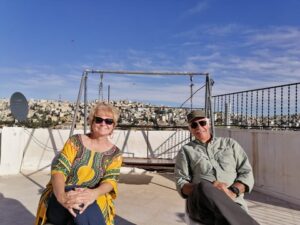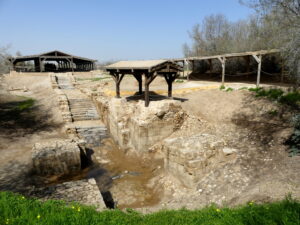Jordan’s recovery: The power of just one
After over a week when Jordan reported no new internal cases of covid-19, and many of the limitations of lockdown were lifted, suddenly the statistics looked bad – largely due to just one person. Now we were seeing daily totals ranging from 14 to 22 new cases in a country that had only totaled about 500. What happened?
What happened seemed to us, in miniature, a likely forecast of the future for other countries where cases are declining and restrictions loosening – as well as a lesson on how to slow outbreaks from Jordan’s handling of the problem.
The spike in cases turned out to come from three sources. One group included truck drivers stopped at the border with Saudi Arabia and other countries. An official country count must include such foreign drivers who test positive. A second source was the influx of around 3000 Jordanian students flown back to the country on special repatriation flights. All the students were tested on arrival, then quarantined for two weeks under supervision at the Dead Sea. During the quarantine period, a number of them returned from the UK, USA and Russia have tested positive. They will remain isolated.
The third and the most significant source was one man, a Jordanian truck driver who returned across the Saudi border in late April, tested negative and was ordered to self-quarantine. Instead, he broke all the rules. He did not self-quarantine. He hosted a large group, over 100 family and friends, for a traditional celebration of iftar, the evening meal breaking the daily fast of Ramadan – a tradition banned for now.
Within a short time, 35 cases appeared among people at the party. By then, Jordan’s health authorities had tested all attendees and up to 250 traced from contact with the driver. Of course, the driver too tested positive. By now, 58 of all 73 new cases since the zero week have been due to this one man, who will face prosecution for his actions. All the rest were quarantined students and halted truck drivers.
Yesterday, to great public relief, we returned to zero new cases internally. The situation could have turned much worse, but Jordan’s officials took control. They did targeted and random testing in the localities affected, along with rigorous tracing of contacts. They continued to do over 4500 random tests daily across the Kingdom. They locked down three towns and neighborhoods where the contacts lived. They clamped down on quarantining Jordanian drivers at a facility near the border. They also developed an app for Jordanians to report similar large gatherings, while renewing calls to avoid them.
Jordan’s Minister of Health initially reacted to what happened as “a major setback and a sudden shock,” but he added,” it did not take the Kingdom back to square one.” He has been proven correct.
The lesson? A bad actor or two can readily generate a new wave of covid-19 cases anywhere. As Jordan shows, however, the wave can be controlled with precautionary testing, tracing contacts and spot isolation. If covid-19 is left to spread on its own through too little testing or tracing, then any place could revisit the worst virus impact of its past.






